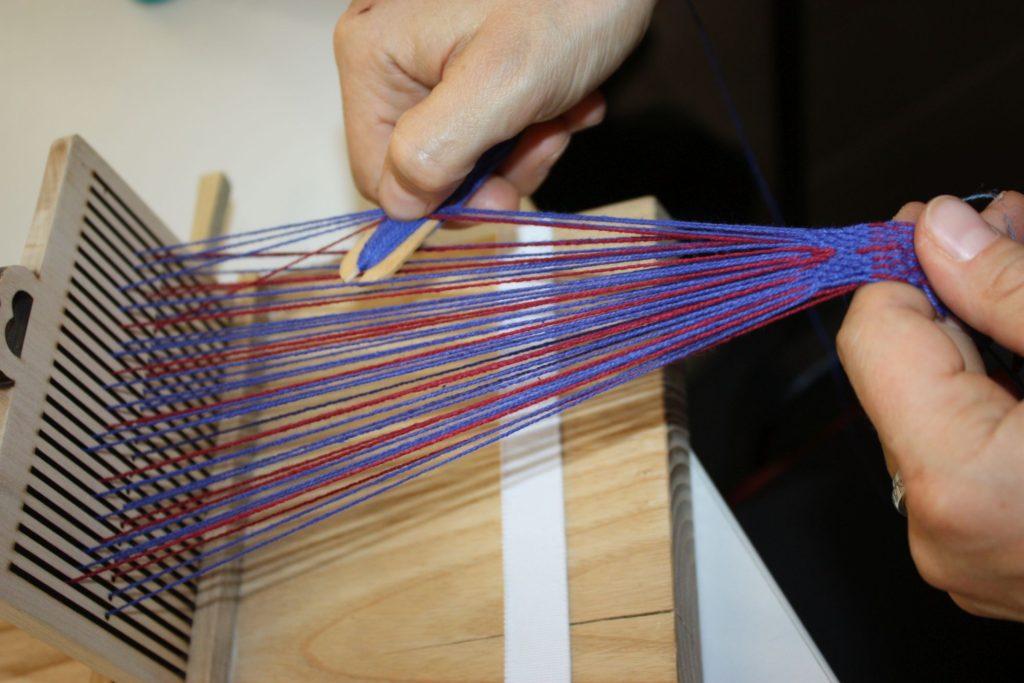Search the Blog
Latest Comments
Library Day!
Which means that you get a gratuitous, late-in-the-day textile picture:

This is my try at weaving rigid heddle pickup patterns - something I had wanted to do for ages, and I finally got around to trying it at this year's Textile Forum. It was... not exactly what I had expected, and it is one of the techniques that are more "meh, don't need to do that" for me.
The basic principle is simple: You have threads in two colours, and you can let the non-background colour come do the surface by picking it up and suppressing the background colour threads between your pattern colour threads. Basically, this means you can do anything at any time (as opposed to twill tablet weave patterning, where the ground structure gives you a framework that you cannot break through). Which, it turns out, is a degree of freedom that I found awkward to handle... plus I did not really care for the many long floats on the back of the band.
That said - I was really happy to have finally tried this!
Comments 3
There are restrictions that apply to this technique. Floats work best in an uneven number and the shouldn't be longer than over 5 wefts. They also look best when started in the top shed. Single dots of pattern colour hide in the background when they are lifted from the lower shed, so there are advisable sequences within patterning.
Reading your text again made me notice that you suppress the background colour between pattern threads. Ruth showed Tracy and me the technique without supressing the background colour. It does't show in the end result on top, but controls the floats on the back a bit and is a lot easier to work with a more stable fabric as a result.
You don't make it easy for yourself with this handheld warp set-up too.
Ah, well, but the "restrictions" you mention aren't really hard ones, are they? They are more like tweaks to make the patterns look better or have less floats, but not things that will work as opposed to things that won't work at all.
I think Ruth's method with the not-suppressed background needs the additional pattern thread holes, otherwise you will have background spots between your pattern threads. Or did you work that technique with the setup that Ronja provided?



